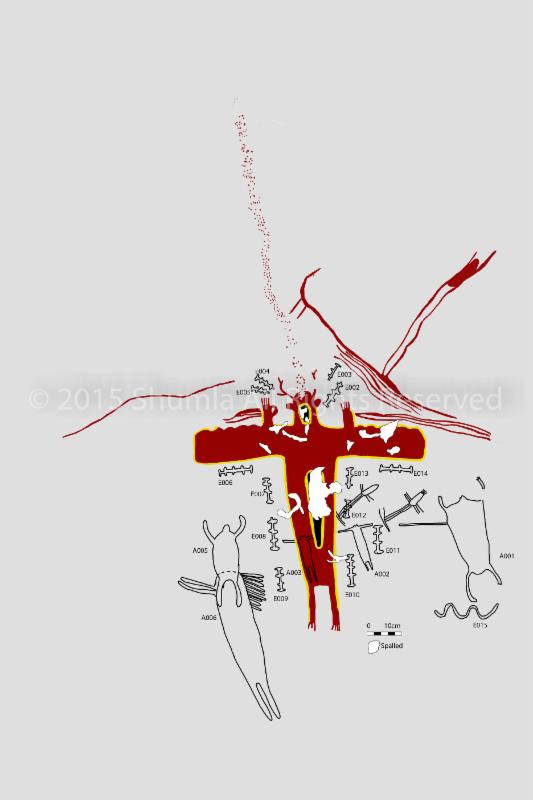A picture speaks a thousand words, but Shumla's figure illustrations say so much more.
Each figure in a rock art panel is painstakingly illustrated using the latest digital technology. For example, the WACOM Cintiq Pen Display -- a digital drawing pad -- allows Shumla illustrators to trace the figure, its attributes, and any associated figures with a digital pen.
"Coloring for science" can be fun, but we take the process seriously and follow very specific steps to produce complete illustrations.
First, we select a close-up photo of the figure. Here's two examples. The art is hard to see - isn't it... Just wait!


Next we use D-Stretch to enhance the photo through different color channels, allowing us to identify paint that may be hard to see with the naked eye.
We import the original and enhanced copies of the figure photo into Photoshop, and create a new Photoshop layer for the initial sketch of the figure. This initial sketch records the figure as it appears in the present day.
Next, we digitally apply the different colors of paint within the figure as separate layers, recording what the figure may have originally looked like when first painted. We then draw the spalled and obscured areas of the figure, as well as any natural features of the rockshelter wall, in new layers.


The final product is a highly detailed and comprehensive figure illustration.
These illustrations give us a snapshot of the condition of the overall figure and help us more closely examine a figure and its attributes. They also preserve forever -- in digital format -- art that will continue to deteriorate and eventually be lost.